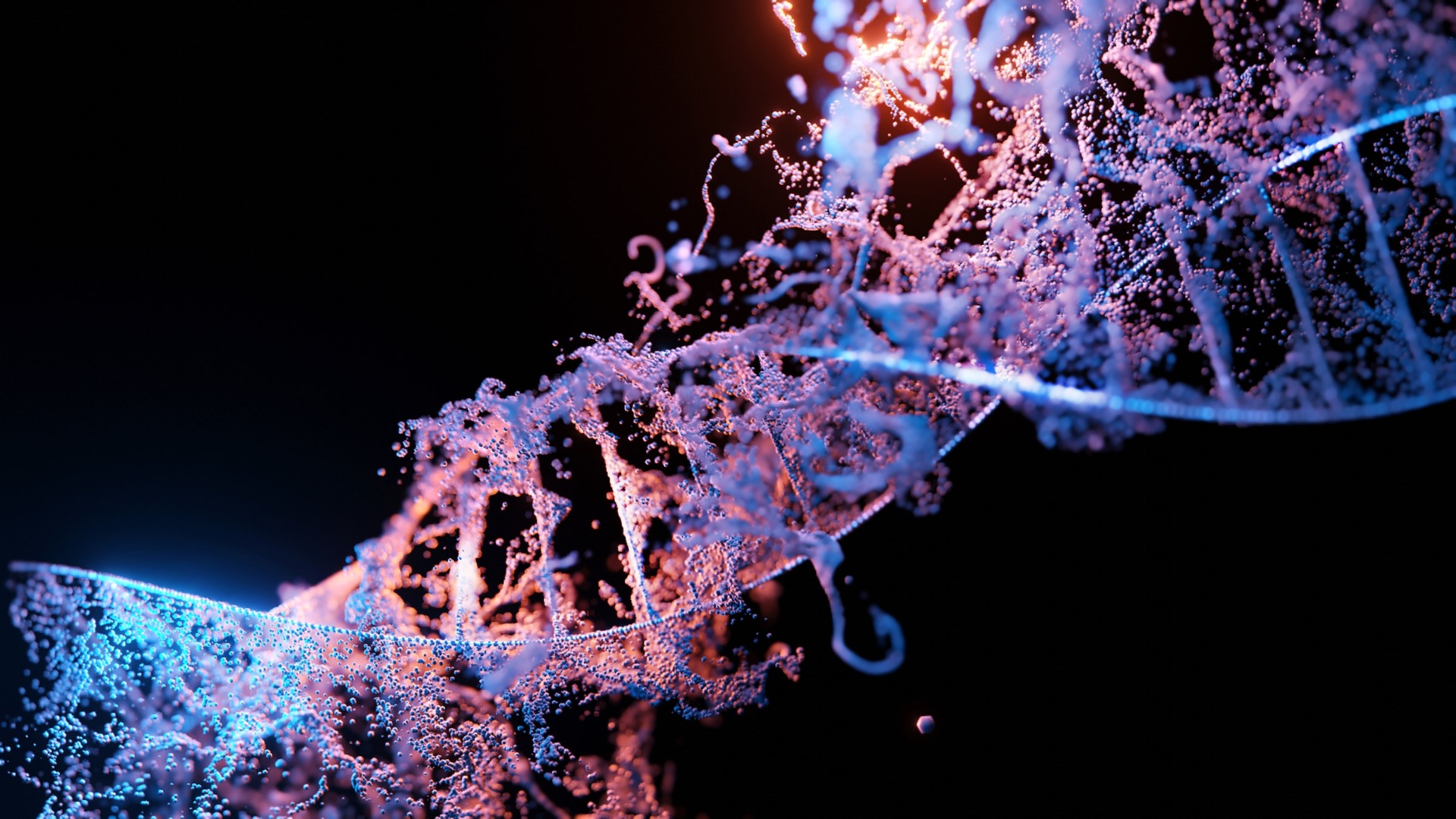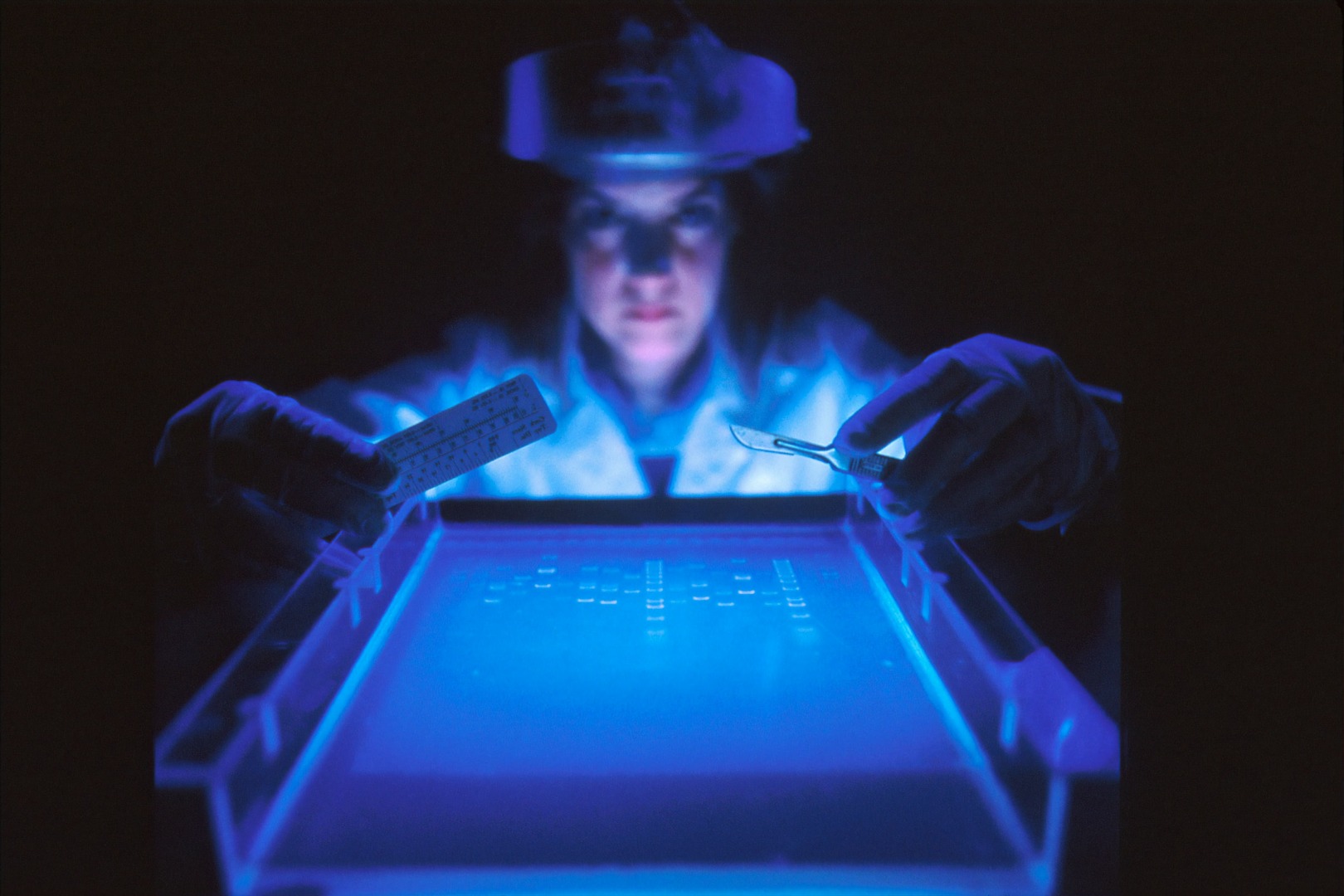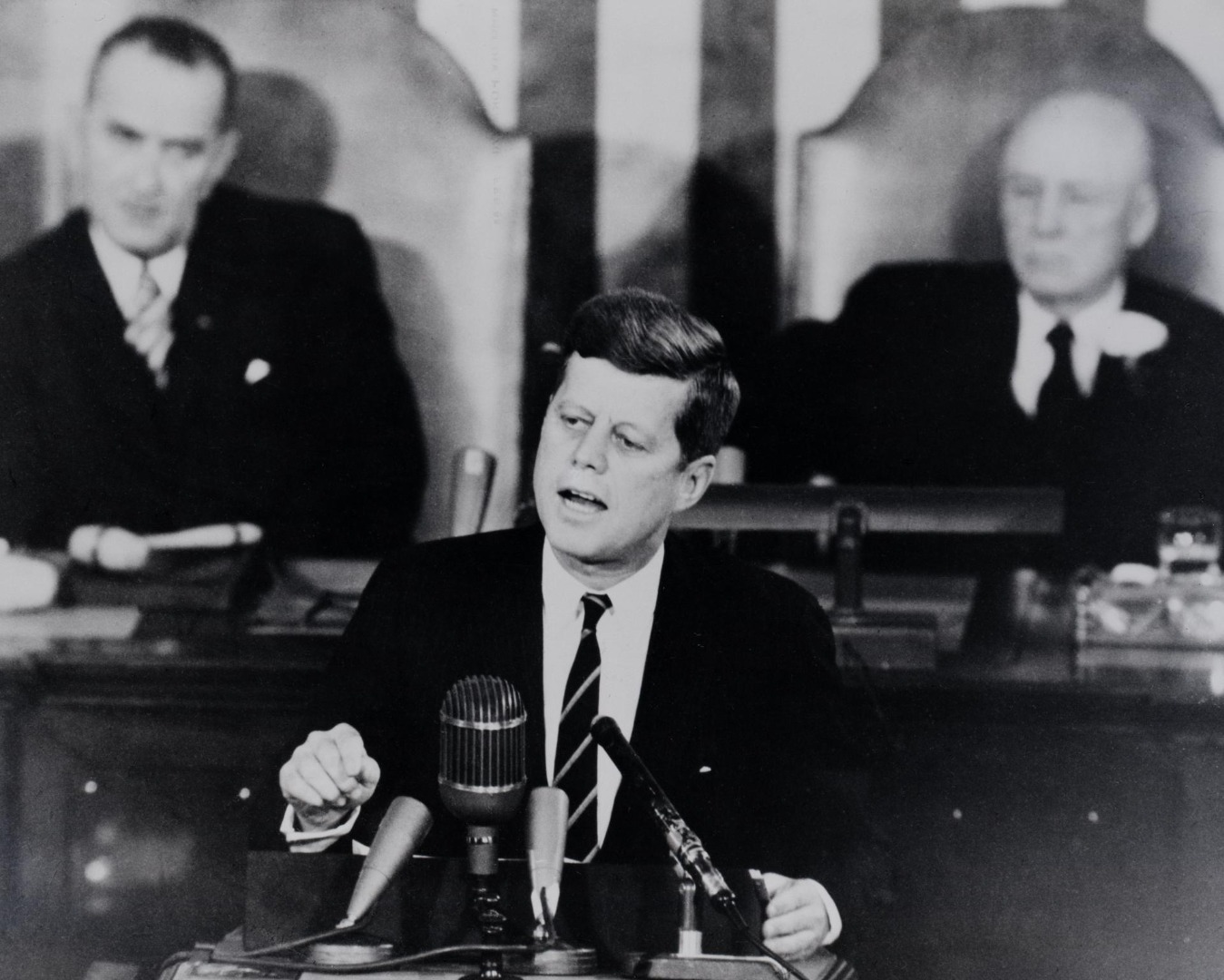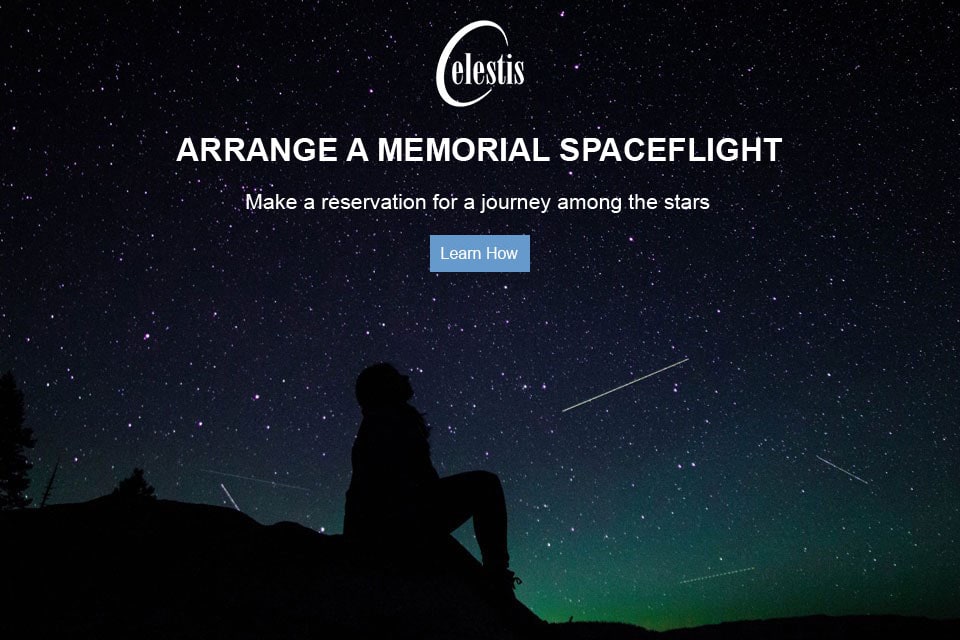Presidents Washington, Eisenhower, and Kennedy to Fly Aboard Celestis’ Enterprise Flight

Photo credit: Sangharsh Lohakare on Unsplash
“The nitrogen in our DNA, the calcium in our teeth, the iron in our blood, the carbon in our apple pies were made in the interiors of collapsing stars. We are made of starstuff.” – Carl Sagan, Cosmos
To paraphrase the legendary Carl Sagan, the bases of human DNA can be traced to the deeper cosmos. It’s believed these DNA bases could provide the key to how life may have come about when Earth was first formed. This theory was proven quite literally by scientists who discovered “the last two of the five informational units of DNA and RNA that had yet to be discovered in samples from meteorites.”
DNA science at present is a far cry from its discovery in the 1950s, which established its unique “double helix” structure and the beginning of its sequencing during the 1970s. The frontier of DNA research has expanded dramatically over the past half-century. Within the last three decades, DNA has allowed detectives and police units worldwide to track down perpetrators in “cold cases” who were thought to have gotten away with egregious crimes. Moreover, home DNA kits have allowed families to establish family trees and connect with long-lost family members; these kits have also aided innumerable patients in discovering genetic disease risks and how to mitigate them. It is hoped that gene therapy and modification could wipe out illnesses with strong genetic links, such as certain forms of cancer. Biologists currently utilize DNA to track the movements and evolution of the world’s diverse civilizations, mapping out how modern society came to be.
But why might it be attractive to send DNA – the entire human genome – 150 to 300 million miles beyond the Earth-Moon system, and why send the DNA of former United States presidents such as George Washington, John F. Kennedy, and Dwight D. Eisenhower? Beyond establishing the first human outpost in deep space, the answers are rooted in possible discovery and off-world genetic and data storage. This idea may sound truly “out of this world,” but read further.
The Secrets Unlocked by Ancient DNA
The study of ancient DNA in a quest to discover how civilizations migrated and evolved has received much attention from the scientific community. In 2022, geneticist Svante Pääbo received the Nobel Prize in Physiology or Medicine for his ancient DNA studies. According to the Nobel Prize website: “Through his pioneering research, Svante Pääbo accomplished something seemingly impossible: sequencing the genome of the Neanderthal, an extinct relative of present-day humans. He also made the sensational discovery of a previously unknown hominin, Denisova. Importantly, Pääbo also found that gene transfer had occurred from these now extinct hominins to Homo sapiens following the migration out of Africa around 70,000 years ago. This ancient flow of genes to present-day humans has physiological relevance today, for example affecting how our immune system reacts to infections.” This emerging field is achieving miraculous discoveries in medicine and anthropology, underscoring how ancient civilizations merged to become present-day societies.

"DNA Fragmentation. A dye marker on agarose gel used to separate DNA by a female scientist. The smaller fragments move faster, the larger ones move slower. This separation process is used to analyze the size of DNA fragments, to map DNA, to separate fragments of DNA to create clones." DNA can tell us about our past, present, and future. Photo credit: National Cancer Institute via Unsplash
A recent article published by Smithsonian Magazine discussed a Current Biology article that revealed how – by DNA analysis – biologists discovered how ancient migrations took place multiple times “across the Bering Strait and elsewhere across Eurasia during key periods of human prehistory.” Scientists extracted ancient DNA from ten Eurasian individuals with well-preserved bones and teeth thanks to colder conditions “who lived in three key regions: Siberia’s Altai Mountains, the Kamchatka Peninsula and other parts of the Russian Far East.” The DNA samples collected were of excellent quality, analogous to those gathered in home DNA kits, which usually require a cheek swab or a saliva sample. However, collecting the DNA was just the beginning of the scientists’ journey.
According to the Smithsonian article, this DNA study further illuminated how diverse populations migrated years before they came to Europe and the Americas: “Analysis of the DNA from those ten individuals provided several key revelations about ancient migrations. First, the broad movements of ancient humans and cultures across Eurasia are evidenced by the discovery of an entirely new population that lived in Siberia’s Altai Mountains. That culture’s descendants, the authors show, were part of lineages that later helped populate both Europe and the Americas. Secondly, individuals of Japan’s Jomon culture, isolated in the archipelago for thousands of years, migrated back to the Asian mainland from which their ancestors came. And finally, Native Americans migrated back into Asia several times over a span of thousands of years."
What this means in non-biologist terms is that ancient DNA has better determined how civilization worldwide came to “be.” In addition, many Native Americans living today can trace their heritage to the hunters and settlers who migrated back and forth along the Bering Strait and elsewhere. These discoveries have massive implications for future DNA that will be waiting to be discovered – such as DNA that has traveled to deep space.
The Future of DNA
According to a 2021 Scientific American article, DNA not only can tell generational stories but also is a viable storage method. The article reported, “The prevailing long-term cold-storage method, which dates from the 1950s, writes data to pizza-sized reels of magnetic tape. By comparison, DNA storage is potentially less expensive, more energy-efficient and longer lasting. Studies show that DNA properly encapsulated with a salt remains stable for decades at room temperature and should last much longer in the controlled environs of a data center. DNA doesn’t require maintenance, and files stored in DNA are easily copied for negligible cost. Even better, DNA can archive a staggering amount of information in an almost inconceivably small volume.”
In layperson’s terms, this means that DNA could be a long-term data storage solution that could eliminate or make scarce bulkier forms of storage – and in addition, this thinking opens the possibility of off-world DNA storage, just waiting to be discovered by future human civilizations (or even possibly alien civilizations). Enter the idea of sending the genetic information of three iconic American presidents – George Washington, John F. Kennedy, and Dwight D. Eisenhower – into a solar orbit, where they will become part of the world’s first human outpost in deep space.

President John F. Kennedy will be one of the three U.S. presidents whose DNA is headed to deep space aboard Celestis' Enterprise Flight. Here he is speaking to Congress in 1961. NASA photo
At first glance, sending three former U.S. presidents' DNA into deep space seems a little bizarre. But the 1976 book The High Frontier: Human Colonies in Space by Dr. Gerard K. O’Neill made a convincing argument as to how and why humans should settle in deep space; it’s still believed that O’Neillian space settlements will likely exist in the future. In keeping with the idea that ancient DNA can tell scientists how we evolved, the DNA of these presidents can tell future civilizations that may settle in deep space more about bygone American leaders and culture, even providing a sort of evolutionary “map” as to how the U.S. started (under Washington) and flourished (under later presidents including Eisenhower and Kennedy).
In addition, let’s return to the idea of DNA as data storage. Off-world DNA storage allows the human genome to be preserved for thousands of years in space without degradation. This means it is possible it could be discovered later, like a cosmic “time capsule.” This could allow future generations to learn more about the U.S. forefathers millennia into the future. Celestis DNA™ preserves the entire human genome as a powder, which is then transferred to a Titanium 5 capsule resistant to the extremes of deep space, such as heat, cold, and radiation.
It’s also not outlandish to think that in the coming decades and centuries, further innovations will be discovered in DNA science that can tell us more about the people and exceptional personalities that will travel into solar orbit thanks to Celestis’ Enterprise Flight – including which DNA characteristics made them wholly distinctive.
Contact us for more information or to receive launch updates
Celestis Memorial Spaceflights’ Enterprise Flight
Celestis Memorial Spaceflights’ Enterprise Flight, due to launch in 2023, will establish a solar orbit 150 to 300 million miles in deep space, becoming the world’s first true outpost of humanity in the cosmos with its memorial spaceflights, Celestis DNA®, and Celestis MindFiles®. The presence of three iconic U.S. presidents on its manifest is only the beginning of what will be a journey for the ages.
Enterprise Flight will also carry Star Trek® creator Gene Roddenberry, his wife and “First Lady of Star Trek®” Majel Barrett Roddenberry, the DNA of their son Eugene “Rod” Roddenberry, the DNA of Nichelle Nichols (“Lt. Uhura”), the DNA of Nichols’ son Kyle Johnson, the DNA of “Dr. McCoy” DeForest Kelley, and the ashes of “Mr. Scott” James Doohan into deep space, serving as the ultimate series reunion. In addition, former NASA astronaut Dr. Philip Chapman will make his second spaceflight, having flown aboard Celestis’ Earth Rise Aurora Flight mission.
This flight will indeed go into the history books, and thanks to the DNA presence of historical figures, the Enterprise Flight’s story won’t just end with its entry into a solar orbit.




